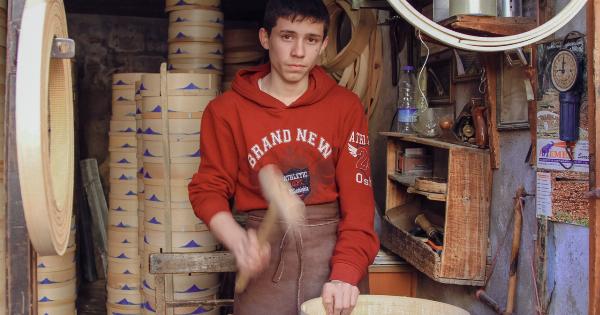Chicago is a city that is known for many things – from its unique architecture, to being the birthplace of the deep dish pizza. However, what many people might not know is that Chicago was also a pioneer in the field of lung transplantation.
This breakthrough medical procedure has saved countless lives over the years, and Chicago can proudly say that it played a major role in its development. In this article, we’ll be exploring Chicago’s impact on lung transplantation, and how it has shaped the field as we know it today.
The Beginnings of Lung Transplantation
Before we dive into Chicago’s involvement in lung transplantation, let’s take a step back and examine how it all began. The first successful human lung transplant took place in 1983, performed by a team led by Dr.
Joel Cooper at the University of Toronto. However, lung transplantation was still in its infancy at the time, and the procedure was far from perfected.
Patients who underwent lung transplantation often faced a host of complications and difficulties post-surgery, and the procedure was considered extremely high-risk.
Chicago’s Impact on the Field
That all began to change in the early 1990s, when a team at the University of Chicago began to make significant strides in the field of lung transplantation. Led by Dr. G.
Alexander Patterson, the team developed a new technique that significantly reduced the risk of complications for patients undergoing lung transplantation. This technique involved using a laser to remove damaged lung tissue, rather than the traditional method of physically cutting away the tissue.
This breakthrough not only made the procedure safer, but it also increased the success rate of lung transplantation. Patients who underwent the new procedure had a higher chance of surviving the surgery and living long, healthy lives post-transplant.
The team at the University of Chicago continued to refine the technique over the years, and it quickly became the standard approach for lung transplantation around the world.
Advancements in Lung Transplantation
Chicago’s contributions to the field of lung transplantation didn’t stop there – in fact, they were just getting started.
Over the years, the Chicago medical community continued to make significant advancements in the field, pushing the boundaries of what was thought possible with lung transplantation. Some of these advancements include:.
1. Double Lung Transplantation
In the early days of lung transplantation, patients would often receive a single lung transplant. However, it soon became clear that for many patients, a double lung transplant would be a more effective solution.
The first double lung transplant was performed in 1988 at the University of Pittsburgh, but it was the team at Loyola University Medical Center in Chicago that really pushed the envelope with this technique. In 1990, they performed the first successful double lung transplant using a technique called “bilateral sequential single lung transplantation”.
This involved transplanting one lung at a time, rather than both lungs simultaneously, which significantly reduced the risk of complications.
2. Living Donor Lung Transplantation
In 1995, the team at Loyola University made history once again by performing the world’s first living donor lung transplant.
This breakthrough was significant because it allowed patients to undergo lung transplantation without having to wait for a suitable donor match to become available. Instead, a healthy family member could donate a lung directly to the patient, increasing the chances of a successful transplant.
The living donor lung transplant technique has since been refined and improved, and is now a viable option for many patients in need of a lung transplant.
3. Ex Vivo Lung Perfusion
One of the biggest challenges in lung transplantation is the short window of time that lungs can survive outside of the body.
This makes finding a suitable donor match incredibly difficult, and often results in patients waiting for months or even years for a transplant. However, in 2008, a team at the University of Chicago developed a technique called Ex Vivo Lung Perfusion (EVLP).
This innovative technique allowed donor lungs to be kept alive outside of the body for an extended period of time, making it easier to find suitable donor matches and increasing the number of successful lung transplants overall.
The Future of Lung Transplantation
Thanks to the groundbreaking work of researchers and medical professionals in Chicago and around the world, lung transplantation is now a safe and viable treatment option for many patients facing end-stage lung disease.
However, there is still much work to be done in this field. Researchers continue to study ways to improve the procedure and increase the success rate of lung transplantation, while also exploring new avenues for treating lung disease altogether.
With ongoing advancements and breakthroughs, the future of lung transplantation is looking brighter than ever.
Conclusion
Chicago’s impact on the field of lung transplantation cannot be overstated.
From developing groundbreaking techniques that have improved the safety and success rate of the procedure, to pushing the boundaries of what was once thought possible with lung transplantation, Chicago has truly been a pioneer in this field. Thanks to the tireless work of medical professionals in Chicago and around the world, lung transplantation is now a life-saving treatment option for many patients facing end-stage lung disease.
With continued research and advancements, the future of lung transplantation is bright indeed.





























